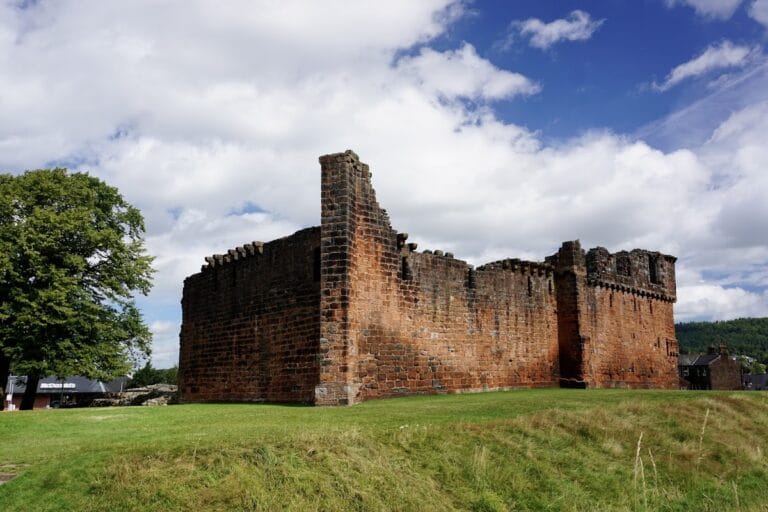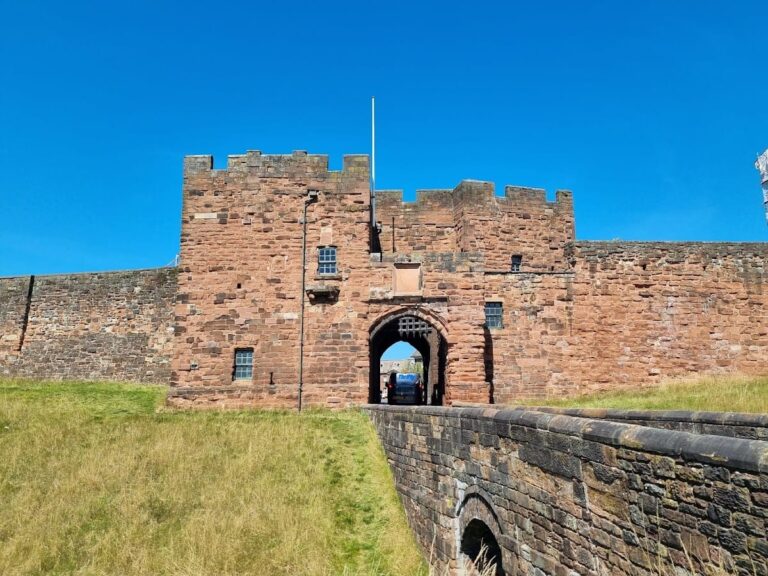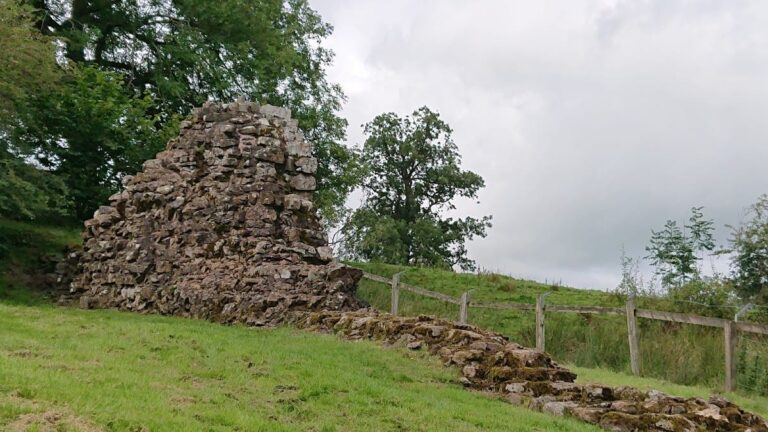Kirkoswald Castle: A Norman Fortified Manor in Cumbria, England
Visitor Information
Google Rating: 4
Popularity: Very Low
Google Maps: View on Google Maps
Official Website: www.visitcumbria.com
Country: United Kingdom
Civilization: Unclassified
Remains: Military
History
Kirkoswald Castle is situated near the village of Kirkoswald in Cumbria, England. It was established by the Normans, a medieval European civilization known for castle-building in the British Isles following the 11th century.
Initially, the site was a manor house owned by Hugh de Morvile. In 1201, King John granted permission to fortify the manor by issuing a royal licence to crenellate, allowing the addition of defensive battlements. This licence marked the transformation of the manor into a fortified residence, reflecting the turbulent nature of the border region during that era.
The castle faced a major military challenge in 1314 when Scottish forces destroyed it amid ongoing conflicts between England and Scotland. Just three years later, efforts were made to rebuild the structure, restoring its defensive capabilities and domestic functions by 1317.
In the late 15th century, specifically 1485, the castle underwent a significant enlargement, which included the construction of a moat. This addition provided an extra layer of defence and was a common feature in castles of the period designed to protect against siege warfare.
After the death of Thomas Dacre, 2nd Baron Dacre, in 1525, important interior elements such as stained glass, wooden panelling, and beamed ceilings were carefully removed and relocated to Naworth Castle. This relocation suggests a shift in the castle’s role or status at that time.
Over the following century, between 1610 and 1688, Kirkoswald Castle was gradually dismantled. This slow process likely reflected changes in military technology, ownership priorities, or economic circumstances, leading to the castle’s decline and partial ruin.
In the 20th century, the historical importance of Kirkoswald Castle was formally recognized. On December 27, 1967, it was designated as a Grade II listed building, acknowledging its architectural and historic value. The site is also protected as a Scheduled Monument, securing its preservation under UK heritage law.
Remains
Kirkoswald Castle was constructed primarily from Penrith red sandstone, a local building material prized for its durability and distinctive reddish hue. The surviving remains include parts of its original moat and several building fragments, among which a tower is prominently visible. The moat, added in the late 15th century, encircled the castle as a defensive water barrier, and remnants of this feature continue to outline the castle’s former fortified boundary.
The visible tower and other remaining structures largely retain their original material, offering insight into medieval construction techniques. Though deteriorated by centuries of natural decay and gradual dismantling, the surviving stonework stands as evidence of the castle’s fortified nature and its adaptation through various historical phases.
The castle occupies terrain that is flat to the southwest and rises into hills toward the northeast, resting at an elevation of approximately 103 meters above sea level. This positioning likely influenced both its defensive advantages and its role within the surrounding landscape.
As a Scheduled Monument and a Grade II listed building, the ruins of Kirkoswald Castle and its moated site are recognized for their protected status. These designations ensure that the remaining archaeological features are preserved, allowing ongoing study and appreciation of the site’s historical significance.







